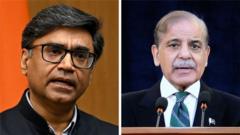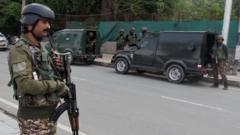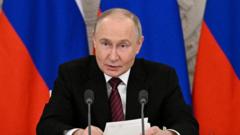As India and Pakistan navigate a tense ceasefire following a brief but intense conflict involving advanced military technology, experts warn that the underlying issues remain unresolved, increasing the likelihood of future confrontations.
Continued Tension: A New Chapter in the India-Pakistan Conflict

Continued Tension: A New Chapter in the India-Pakistan Conflict
The recent escalation between India and Pakistan highlights the precarious balance of military capabilities and diplomatic interventions in a volatile region.
India and Pakistan have seemingly retreated from the edge of a significant conflict, but the implications of their recent violent exchanges cannot be ignored. The chaotic four-day engagement marked by aerial assaults and combat involving cutting-edge military technology indicates that both nations, nuclear powers with a complex history, face an uncertain future.
During this conflict, new military hardware, including drones and precision missiles, played a crucial role. The sky over Kashmir witnessed a barrage of airstrikes, alongside rapid-fire antiaircraft responses. Weaponized drones, for the first time in the conflict's history, were utilized extensively, offering both sides a tactical advantage while posing a grave risk to stability in the region.
Once missiles began penetrating each nation's territory and strategically targeting military installations, tensions soared, and the atmosphere was charged with military readiness and threats. Only after reaching these alarming levels did international diplomatic efforts manage to intervene, implying a much-needed, albeit temporary, reprieve from potential disaster.
Srinath Raghavan, a military historian, outlines the historical reliance on external diplomatic maneuvers to de-escalate India-Pakistan conflicts. However, he expresses concern that the current geopolitical landscape is defined by weakened international will and distracted leadership, which leaves little room for effective mediation in future crises.
As both countries grapple with entrenched religious nationalism and a burgeoning arms race, the challenges to sustained peace remain formidable. With each escalation, the specter of more frequent confrontations looms ever larger, underscoring the necessity of renewed focus on diplomacy to resolve the long-standing tensions rooted in historical grievances.






















